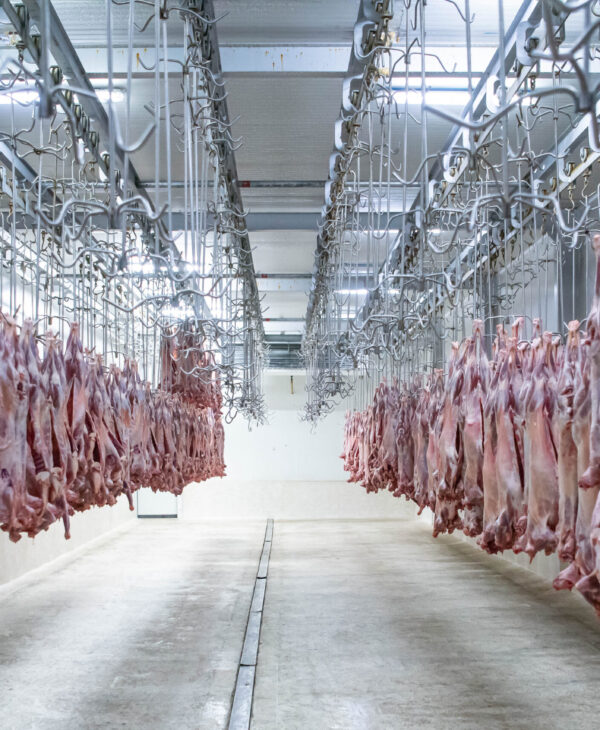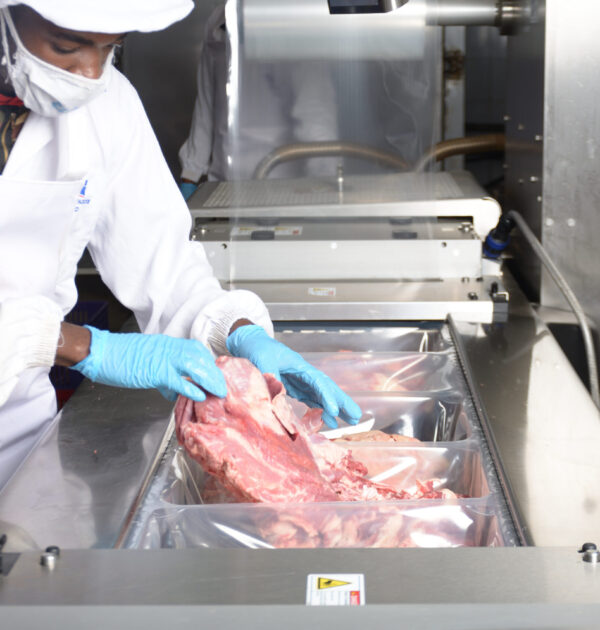
The Quality Meat Packers abattoir is used for the slaughter of cattle and small stock from various family farms and ranches throughout Kenya and is amongst the most modern facilities of its kind in Africa. The abattoir has a capacity to process up to 900 cattle per day and 3,000 small stock per day. The slaughterhouse is fitted with the very best equipment and technology throughout the slaughter process and the plant conforms to international hygiene and safety standards.
We use an especially thorough pre-harvest preparation process. These practices are designed to ensure the humane treatment of livestock and are a key reason why our animal welfare standards are second to none. All livestock are rested and given access to fresh drinking water while they fast for at least 12 hours prior to slaughter. This reduces stress to the animals, and ensures that only healthy, calm animals are presented for slaughter. Livestock are washed prior to slaughter to remove any dirt and fecal matter, reducing the likelihood of bacterial contamination.
At Quality Meat Packers we believe in humane slaughtering practices in accordance with Halal requirements and have put in place systems which make sure that these are maintained and controlled in accordance with the strictest health standards. This allows us to meet the demanding food safety expectations of our sophisticated client base, both local and international. Our Halal slaughter process includes the slaughtering of the animal by appropriate personnel during which time the jugular vein, trachea and esophagus are cut in tandem. The animal is then bled along the conveyor for approximately seven minutes. The dressing is then completed and evisceration is carried out along the conveyor system.
Because of the export status that we enjoy at Quality Meat Packers, all health inspection during the slaughter process is carried out by the meat inspection division of the Kenyan Department of Livestock. In addition, our own quality assurance team is always on-site to ensure further inspection per specific customer requirements.
After inspection, the carcass is washed, weighed and graded. The animals are graded as per governmental guidelines, including prime, choice, FAQ, standard and commercial grades. The carcasses are then stored in the chilling facilities where the aging and curing of the meat takes place. The chilling facilities have a capacity of 1,500 carcasses operating at temperatures of between 0°C – 2°C. There are also additional freezing storage areas where frozen carcasses and cuts are held before dispatch.
Every carcass is carefully inspected and pH monitored in order to enhance the overall quality of our meat products. Once the livestock are slaughtered and dressed a certain percentage are sold as swinging carcasses and the balance are moved through to our De-boning Plant and Meat Processing Facility where we add value, creating our many different high quality meat products.












